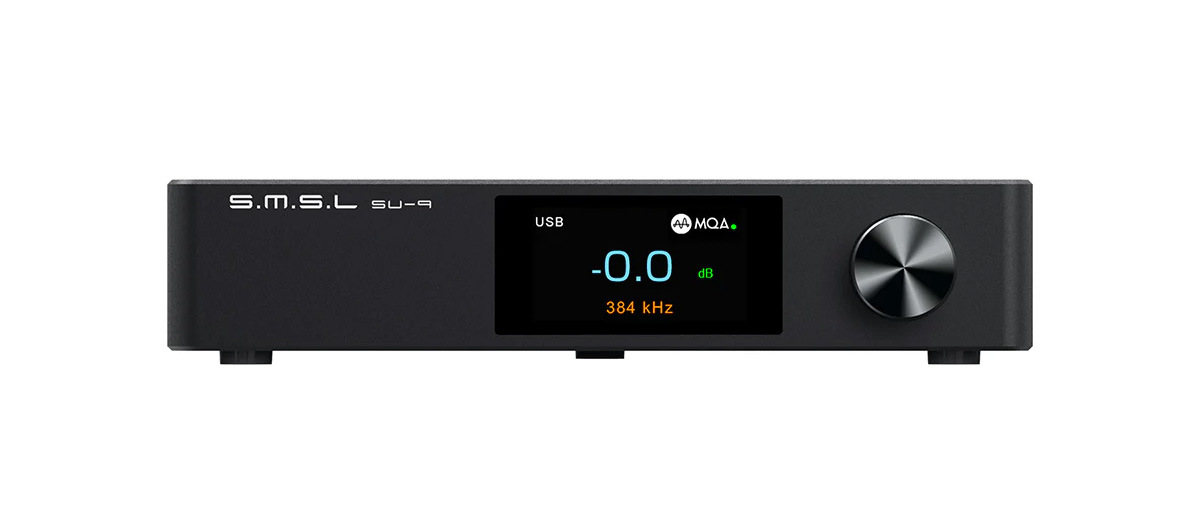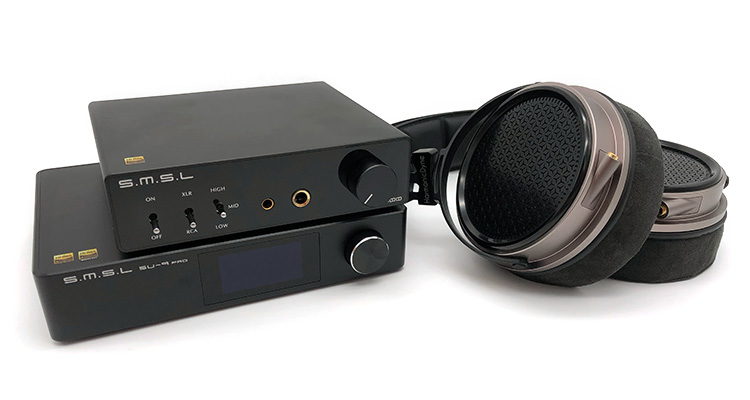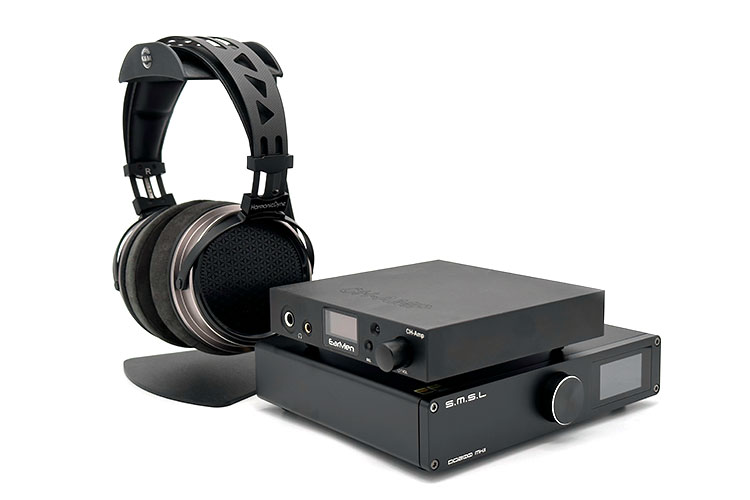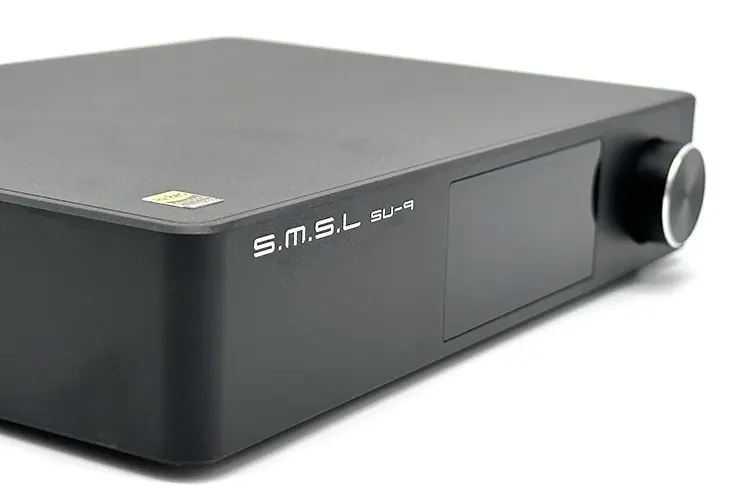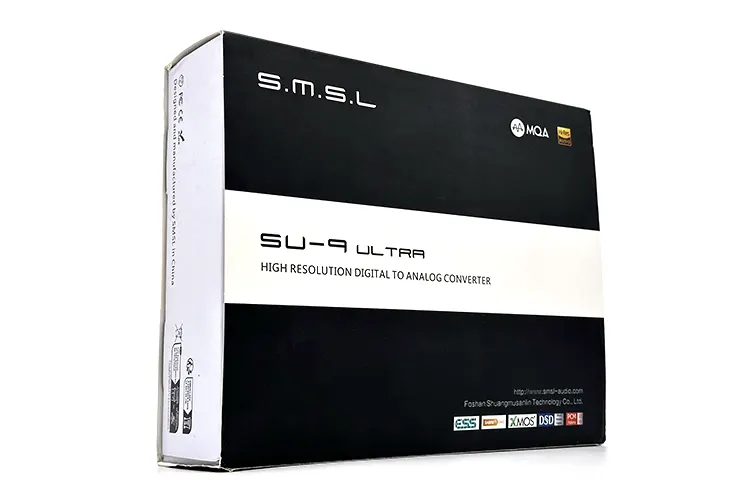Synergy
Pairings
Pairing this latest DAC from SMSL first with resolving gears like the H300 headphone amplifier and the Audio-Technica ATH-ADX5000, the tuning has only been shaded for the better.
The width of voices coming out of the ATH-ADX5000 showed a bit more lushness while also tapering down the fragility of guitar edges.
It wasn’t able to show as much control in taming the dynamics of the treble region but the resolve of the headphones was still utilized. The SU-9 Ultra also lets the low-end of the headphone come out of its shell a little bit.
Using the Zeus Elite is quite enjoyable as well for a change of pace. It also doesn’t accentuate the airier parts of the song though like the SU-9 Ultra so don’t expect too much in this regard.
The warmer inclination however plays well with the SU-9 Ultra and it also takes back some of the excessive vigor of instruments.
Select Comparisons
SMSL SU-9 Pro
Technical
As I mentioned in the beginning part of the review, the two are sharing so much with each other that the only real reason for choosing one from the other is the DAC chip stuffed inside.
The ES9039MPRO used on the SU-9 Pro doesn’t have a tandem digital filter chip similar to the AK4191 of the SU-9 Ultra though both designs are still top-class decoders irrespectively.
Those who look at numbers to decide though will find the distortion figures of the newer DAC slightly higher than the SU-9 Pro and dynamics a smidge lower.
I do not base my judgment on metrics such as these two though since I’ve seen higher-end DACs with worse numbers and I couldn’t be happier with those nonetheless.
Design
Bearing striking semblance, what could I possibly write here to divide the new ‘Ultra’ from its year-old brother? For starters, the new SU-9 Ultra display is brighter at max setting.
The two units when apart may seem completely identical but when stacked on top of each other, the SU-9 Pro chassis reflected light a little bit more. Knocking the sides as well will return a different note confirming the change in finishing.
What’s more, SMSL took notice of the rocky multifunction knob of the SU-9 Pro and fitted a firmer set. To top it off, the silver ring accent on the face of the volume wheel has been dialed down.
Performance
If it seemed like I was stricter on the SU-9 Ultra than on my SU-9 Pro review, that’s only because I’ve raised the bar above the latter’s achievements. In any case, sharing the same face wasn’t enough to blur the benefits of the newer DAC.
Owners of the SU-9 Ultra will immediately benefit from the much cleaner low-end blows and intricately pronounced bassline bite.
The SU-9 Pro on the other hand is more geared towards body and scale. Between the two, beats on the Pro model sound softer making it appear less accurate.
Trading some of the expansive diffusion created by the SU-9 Pro, the SU-9 Ultra synthesizes the body of strings and vocals with a velvety quality.
Note that both gears can place instruments around the same area but the lack of air in the SU-9 Ultra diminishes the hall effect of some songs.
The SU-9 Pro doesn’t accentuate the treble region as much putting less effort for vocals to sing alongside riffs and cymbals. It scaled electric guitars a little bit smaller than the SU-9 Ultra though so that’s a factor as well.
SMSL DO200 MKII
Technical
It was hard for me at first to realize the deciding factor in choosing between either of the two devices noting that they’re priced closely. But that’s when I remembered that the bigger form factor of the DO200 MKII isn’t for nothing.
What the DO200 MKII brings to the table aside from having an ESS chip if that’s what you’re after, is that even though it has slightly lower performance figures than the SU-9 Ultra, professionals will get access to an AES/EBU and I2S input.
Still, the newer SU-9 Ultra will surely steal the show for the most part thanks to its novel AK4191 and AK4499EX chip combo.
Design
The DO200 MKII emphasizes its centrally placed volume knob. Even though it has a bigger wheel diameter than the SU-9 Ultra, its taller feet and body mean your finger can grab it at any position.
In my experience, I have to let go of the SU-9 Ultra volume knob more often when dialing into the correct volume.
Having a bigger chassis won’t be for everyone though since its footprint is significantly larger than the SU-9 Ultra. The low-profile appeal of the SU-9 Ultra will lessen though if the additional inputs of the DO200 MKII are a must-have.
Performance
Size indicates otherwise but the SU-9 Ultra is the DAC that showed a more reliable performance when it comes to technicalities.
Together with a more controlled low-end grumble, the SU-9 Ultra takes care of kick drums and synth beats to more resolving levels. The release date of the two DACs may not be too far apart but the new AKM chip of the SU-9 Ultra does magic in improving the dynamics and realism of a bass guitar.
Aside from being placed farther back, vocals on the SU-9 Ultra are tuned more organically than the thick and forward presence coming from the DO200 MKII. Detail retrieval is close but the SU-9 Ultra edges the other one out, especially in the quality of subtleties.
Electric guitar riffs from the DO200 MKII are also on the busy side but it wasn’t able to deliver the same level of control as the SU-9 Ultra. What the latter provides is a truer image placement.
Our Verdict
Even though the SU-9 Ultra bears some levels of cosmetic updates to keep things fresh, I don’t think SMSL is still looking for fresh compliments having kept a similar look all these years. The true driver of its potential success lies in what’s underneath the hood.
After giving it a thorough listen, the SU-9 Ultra proved the move to a new DAC chip manufacturer is worth the risk. SMSL flooded this diminutive set with enough individuality to set it apart from a sea of options out there.
The only thing I’ll be cautious of is the conservative presentation of air that somewhat hampers the depth of notes to fully materialize. Still, I wouldn’t say it won’t fit those who are shopping for a transparent decoder for their amplifier or powered monitors.
SMSL SU-9 Ultra Technical Specifications
- DAC: AKM AK4191+AK4499EX
- Input: USB/Optical/Coaxial/Bluetooth
- Output: RCA/XLR
- THD+N: 0.00006%
- Dynamic Range: 132dB (XLR), 127dB (RCA)
- MQA Decoder: USB/Optical/Coaxial
- MQA-CD: Decoder: Optical/Coaxial
- Sampling Rate and Bit Width: 32bit/768kHz PCM, DSD512
- Bluetooth: 5.0
- Size: 187.5x154x40mm (WxHxD)

